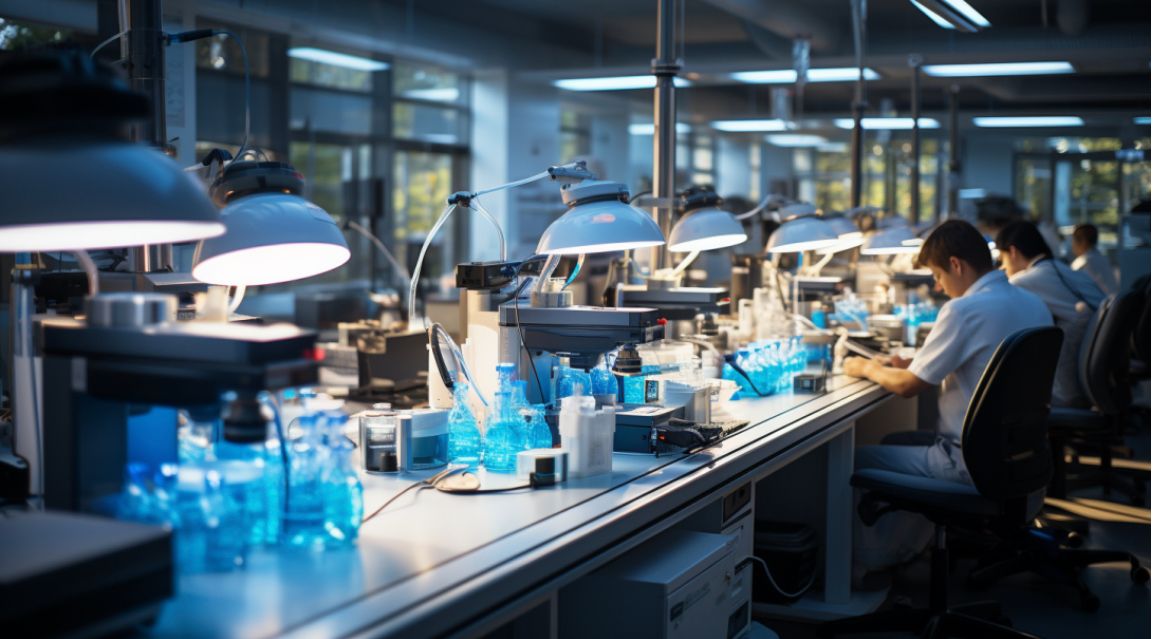Experimental studies are one of the most common approaches to scientific research, especially when it comes to establishing cause-and-effect relationships. This method is vital in many fields, including psychology, education, and social sciences, where understanding the impact of specific actions can lead to important discoveries.
In medical research, experimental studies are essential for developing and testing new treatments. They are the main way researchers evaluate whether new drugs and therapies are safe and effective before they receive FDA approval and become available to the public. By rigorously testing these interventions, researchers help ensure that only the most reliable options are offered to patients, ultimately improving healthcare outcomes.

Looking to participate in a clinical trial?
Our clinical trial platform can connect you with trials that match your needs and eligibility. Take the first step towards accessing cutting-edge treatments and start your search today to discover the potential benefits of participating in clinical trials.
What is an experimental study?
Experimental studies determine the relationship between an intervention and its resulting outcome. In medicine, the intervention is usually a new drug, treatment, or therapy which is compared against a ‘control’ (either a placebo or an existing intervention) to identify whether it is safer and/or more effective.
These studies are normally randomized clinical trials, which means the participants are allocated into different groups by chance.
How do experimental studies work?
Researchers typically identify the problem they want to study, create a hypothesis predicting the results, and design the research protocol. They then select participants, randomly assign them to the experimental or control group, and complete the trial under clinical conditions.
During the study, an independent variable is manipulated within the experimental group only, and its effects are scrutinized. Data from both groups are analyzed to determine if there is a significant difference between them, and a report is created to share the findings.
When are experimental studies used?
Experimental studies are used when a cause-and-effect relationship between different variables needs to be established. They’re especially useful when it’s important for outside influences to be controlled or mitigated, allowing the impact of the independent variable to be observed with accuracy.
Why are experimental studies important?
Experimental studies allow for a high level of precision and control, enabling scientists to pinpoint how different factors influence the results, so they can reach reliable and accurate conclusions about causal connections.
The rigorous, empirical evidence they gather can result in innovative advancements in knowledge, treatments, and theories that have the potential to change millions of lives.
Why are experimental studies critical in healthcare?
Experimental research studies are vital to healthcare as they ensure the reliable development of medical innovations. The thorough testing in clinical trials ensures new drugs or treatments are safe and effective before being distributed more widely, leading to better patient outcomes and more informed healthcare decisions.
Experimental study design types
Scientists can select from three different types of experimental research design, which are carefully chosen to match the requirements of the study.
Pre-experimental design
Pre-experimental research studies are the simplest style and often happen before the true experiment begins. This allows researchers to form initial conclusions about whether the study is worthwhile.
These studies are not usually randomized, and they tend to follow one of three structures:
- One-shot case study research design, where a single group is subjected to the intervention and tested at the end.
- One-group pretest-posttest design, where researchers apply a test before and after the intervention is applied.
- Static group comparison design, where researchers assess two groups, but only one receives the intervention, and testing occurs at the end.
True experimental design
True experimental design is the main method used to apply a scientist’s research to a subject. It uses randomization to place participants into a control group which won’t be manipulated, or an experimental group which will receive the independent variable.
It uses robust statistical analysis to prove or disprove the hypothesis, offering extremely accurate and reliable results. Various design structures can be used based on the number and style of groups.
Posttest-only control group design
This design randomly divides participants into two groups. One group is the control, and doesn't receive the intervention, whilst the other does. Researchers will perform tests at the end to identify the outcomes of being exposed to the intervention.
Pretest-posttest control group design
This structure enables researchers to test the participants before and after the experimental group is exposed to the intervention, allowing them to identify any changes. They might also check whether the control group has changed, enabling them to make adjustments when assessing the data.
Solomon four-group design
This type of experimental research design is the most comprehensive. It consists of four groups of randomly assigned participants, allowing for additional variables to be introduced within the groups, with tests taken at the beginning and end. The data gathered offers detailed insights into the impacts of the intervention in different circumstances.
Quasi-experimental design
This type of research approaches the study in the same way as other experimental designs, but the participants aren’t assigned randomly. This might be due to rules and regulations preventing this from happening, for example, if the research is taking place within a university.
Advantages of experimental research
Experimental studies are an essential part of medical research and provide scientists with many important benefits.
Strong variable control
This type of research takes place within a secure and controlled environment, where the researchers can carefully control the variables. This enables them to obtain accurate and carefully measured results.
Broad application
Experimental research can be applied across various fields, spanning social sciences, physical sciences, education, and psychology. As such, it’s a commonly used and a reliable way for a great number of professions to identify cause-and effect.
Specific results
The type of research can be adapted to the scientist’s unique needs, as they can design a research protocol that delivers specialized data for a very specific type of result.
Actionable results
The results gathered from experimental research offer immediate insights and conclusions, so scientists are able to act on the information swiftly and make any required adjustments.
Foundational use in further experimentation
Experimental research is the basis for many other types of analysis. The data gathered can be used to formulate ideas for further studies, it can be repurposed for other research, or it can be examined in greater detail for a more in-depth study.
Disadvantages of experimental studies
The experimental method is undoubtedly an incredibly effective way of learning more about a hypothesis or condition. However, as with any type of research, it also presents a few challenges.
For example, human error can result in inaccurate data, and human responses themselves can be difficult to measure. What’s more, extraneous variables can’t always be controlled, and research participants can cause bias. The results of testing in a controlled environment could also be difficult to apply to the real world.
However, experimental research is still one of the most effective ways to test a hypothesis and establish cause-and-effect.
What is the difference between experimental and non-experimental research studies?
During experimental research, researchers can completely control the independent variable, and manipulate it in various ways to test the original hypothesis. However, they don’t have this type of control in non-experimental studies, instead relying on observational, descriptive, or correlational data extracted from naturally occurring variables.
Observational vs experimental studies
The difference between observational and experimental studies lies in the level of intervention, with observational studies focusing on passive data collection and experimental studies actively manipulating variables to assess their effects.
While observational studies can reveal correlations and trends, experimental studies provide stronger evidence for cause-and-effect relationships. Both types of studies are important, as they complement each other and contribute to a deeper understanding of various phenomena.
Examples of experimental studies
A straightforward medical experimental study might involve 20 participants who are randomized into two groups. One group receives the drug or intervention, and the other a placebo. The impacts are then recorded and analyzed.
Experimental studies are also very popular in the world of psychology, and some of these experiments have become well-known within the scientific community.
Pavlov’s dog
One of the better-known psychological experimental studies was Dr. Ivan Pavlov’s research into the animal digestive system back in the 1890s. This was the inception of ‘classical conditioning’ which is one of the most influential theories used in psychology today.
Pavlov showed food to a dog, then collected its saliva in tubes so he could measure its response. Over time, it became clear that the dog was starting to salivate as soon as he heard the footsteps of the assistant who brought the food.
Pavlov decided to take the experiment further and discover whether other neutral stimuli could trigger a similar response. So he started a metronome ticking just before giving the dogs every meal, and eventually, they salivated purely at its sound.
This demonstrated that animals can learn to associate unrelated stimuli (the metronome in this case) with unconditional stimuli (the food), leading to a conditioned physiological response.
Psychological study on dividing attention
A study into dividing attention in the classroom was designed to investigate whether electronic devices, such as tablets, cell phones and laptops, had transformed lectures into a divided attention task.
During the experimental study, the effect of using an electronic device for non-academic purposes during lectures was measured. Electronic devices were allowed in only half the lectures of a two-section course, enabling researchers to assess their effects in a within-student, within-item counterbalanced experimental design.
In-class quiz questions revealed that dividing attention between a lecture and an electronic device didn’t reduce comprehension. However, it did reduce long-term retention of the lecture, which in turn significantly impaired exam performance.
Conclusion
Experimental studies establish a cause-and-effect relationship between an intervention and the outcome. Medical experimental studies usually involve dividing participants into two or more groups, with one receiving the intervention, and the other acting as a ‘control’ and given a placebo or existing treatment.
These types of studies are vital for advancing medical knowledge by determining the effectiveness and safety of new medical interventions – such as drugs, treatments, or therapies – before they can be approved for use within the general population.
